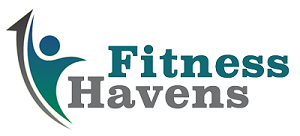As an essential service for a dignified life, health evolves from behaviors and changes in society. One of the most expressive is the age of the population, which implies different needs and medical care.
Estimates from IBGE (Brazilian Institute of Geography and Statistics) indicate that the elderly population will triple in the coming decades, going from 19.6 million (10% of the total), in 2010, to 66.5 million people in 2050 (29, 3% of the total).
This change in the population profile calls for a new look at health priorities, shifting the focus from acute and epidemiological diseases to chronic and cardiovascular diseases and disabilities.
Studies also show that people should increasingly seek health services and that the period for occupying hospital beds will be extended.
Hence the need to strengthen a preventive approach, through awareness and adoption of healthier habits, such as the practice of regular physical exercise and a balanced diet.
It is worth mentioning that this preventive approach has inspired some innovations in the health area, as we will see below.
Others focus on the analysis of information for a personalized and humanized treatment, which adds more quality of life to the patient.
# 1 Big data in medical care
Big data is a term that refers to the collection and use of a large number of information, promoting changes in traditional forms of data analysis.
Connected databases are already used successfully by the Ministry of Health.
They bring together important information, allowing for assessment and estimates that serve as the basis for prevention and tracking programs for pathologies and risk factors.
The Live Birth Information System (Sinasc), Mortality Information System (SIM), and the SUS card are some examples.
As this article on the use of big data in health, by Alexandre Dias Porto Chiavegatto Filho, explains, technology is essential to form and integrate immense databases, allowing their comparison.
The big data will allow the crossing of information to increase the sample size in scientific research on medicines and treatments.
After a few decades, it will be possible to identify, for example, if a medication with a certain active ingredient fights migraine in women over 40 years old.
Approaches will no longer be decided from superficial percentages but profiles close to those of patients.
# 2 Telemedicine
This specialty uses information and communication technologies to share information between healthcare professionals and patients.
Today, telemedicine connects doctors to patients around the world, democratizing access to quality consultations and exams.
An important initiative was created at the University of Arkansas, United States, to assist women with high-risk pregnancies living in rural areas.
Because they are in remote locations, these patients would have to travel long distances to perform adequate prenatal care.
But, with telemedicine, they began to receive online medical advice, reducing mortality rates.
The Ministry of Health and the Federal Council of Medicine require that medical care be done in person.
However, telemedicine is already used for issuing medical reports at a distance and second qualified opinion on diagnoses.
# 3 Virtual Reality in Health
The Health Organization estimates that 800,000 people die by suicide every year.
The event is closely related to mental disorders, often neglected and stigmatized.
Although one in 10 people in the world needs mental health care at some point in their lives, low-income countries have only two professionals in the sector per 100,000 inhabitants.
The use of virtual reality (in English, virtual reality, or VR ) can be an alternative to serve these populations.
Quite common in video games, VR is an immersive technology that designs a virtual setting with which people can interact.
Recently, a team of European researchers used this tool to treat fear of heights in a group of patients.
Digitally, they went through orientation sessions and were led to scenarios in which they were encouraged to overcome the phobia.
At the end of the experiment, 34 of the 49 participants progressed, while 100% of the control group continued with the same level of height phobia.
The results provided the impetus for researchers to extend the methodology to the treatment of patients with depression or high levels of anxiety.
# 4 Internet of Things in health
The Internet of Things (IoT) refers to the universe of objects connected to the internet.
Shortly, the expectation is that most objects in common use are connected to the network, giving rise to greater convenience in homes, businesses, and public places.
An elderly person’s home, for example, may have sensors on the floor to identify falls and notify caregivers, family members, or even emergency services, such as SAMU.
This reality is getting closer as wearables become popular – wearable devices that collect information autonomously.
An individual with high blood pressure can use a watch to collect and store information about blood pressure, heart rate, and others.
By sharing this data with your doctor, you will be able to better control blood pressure, preventing acute events and the development of cardiovascular diseases.





